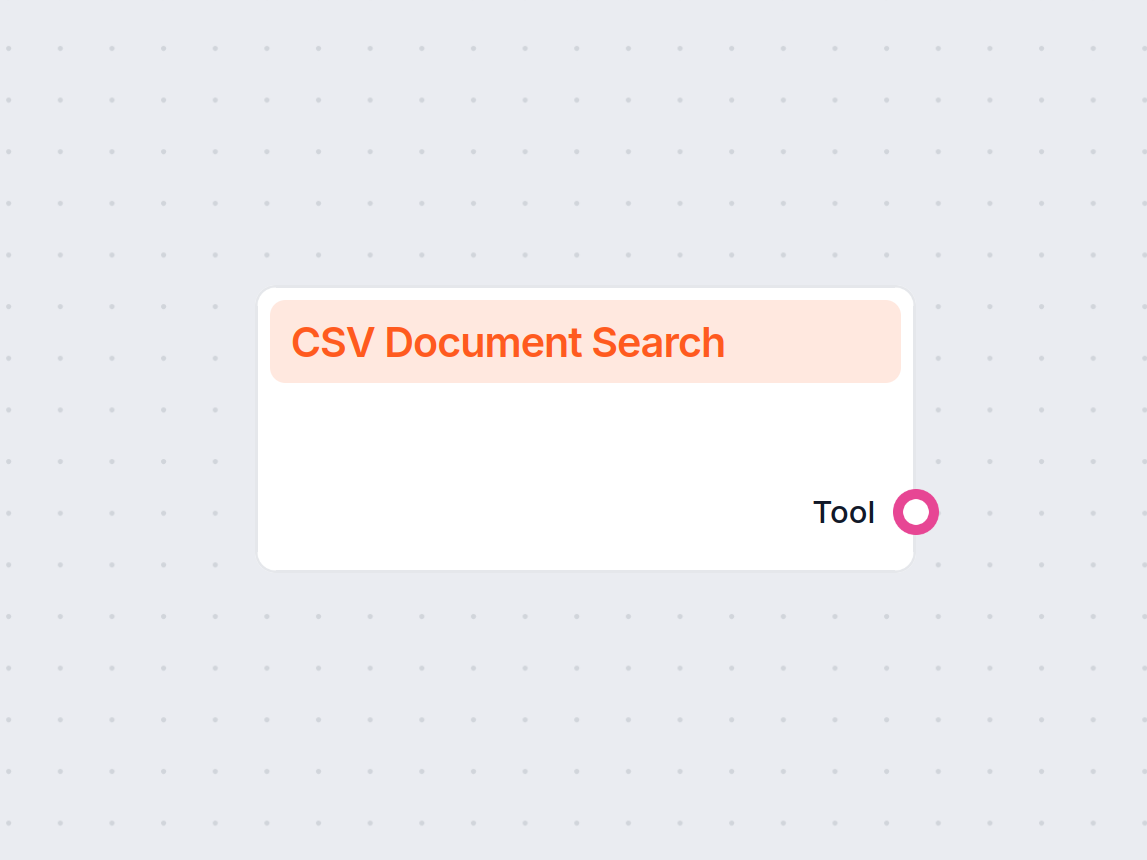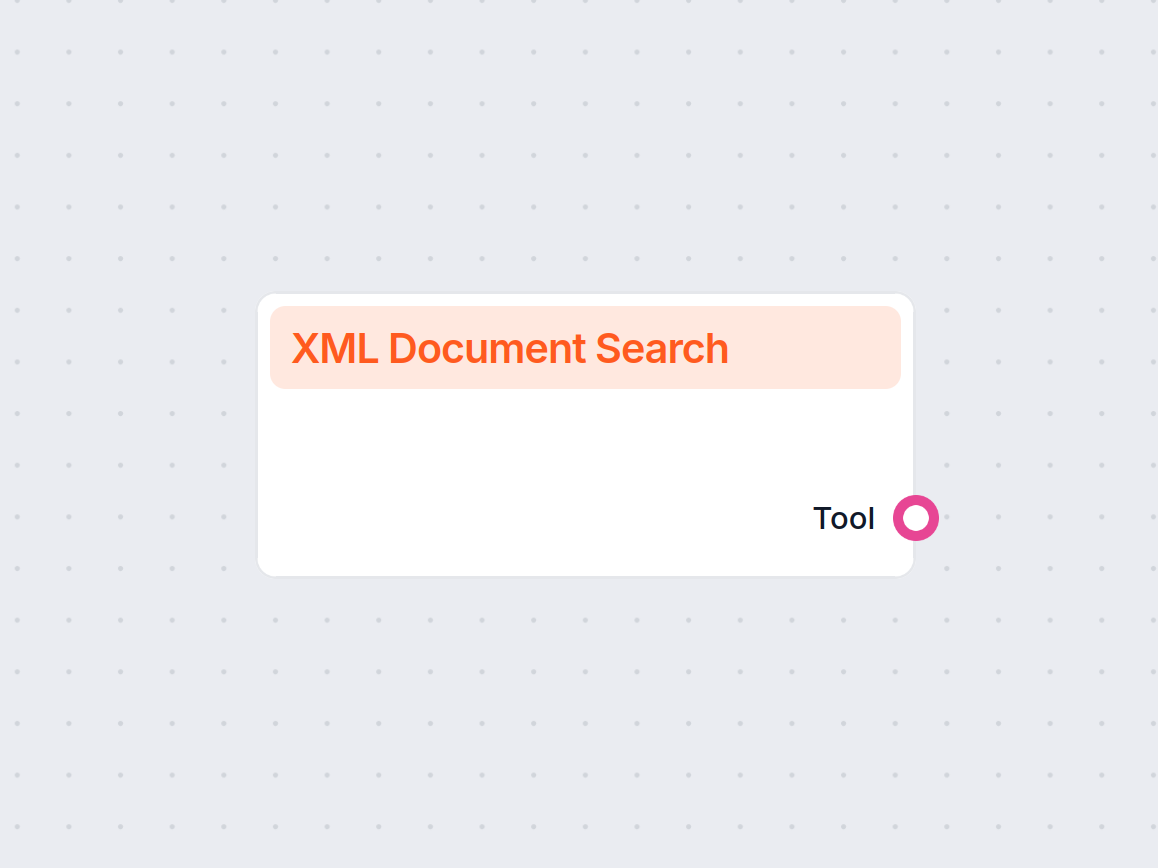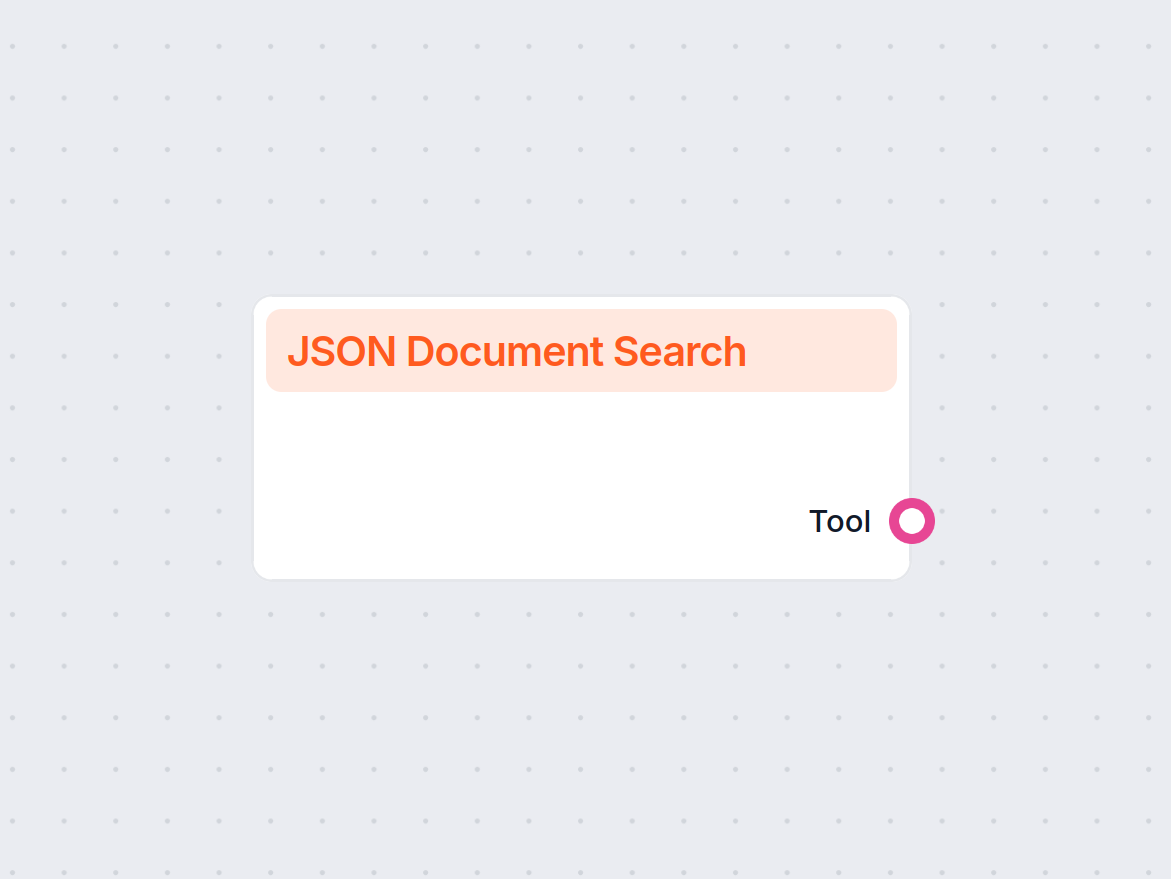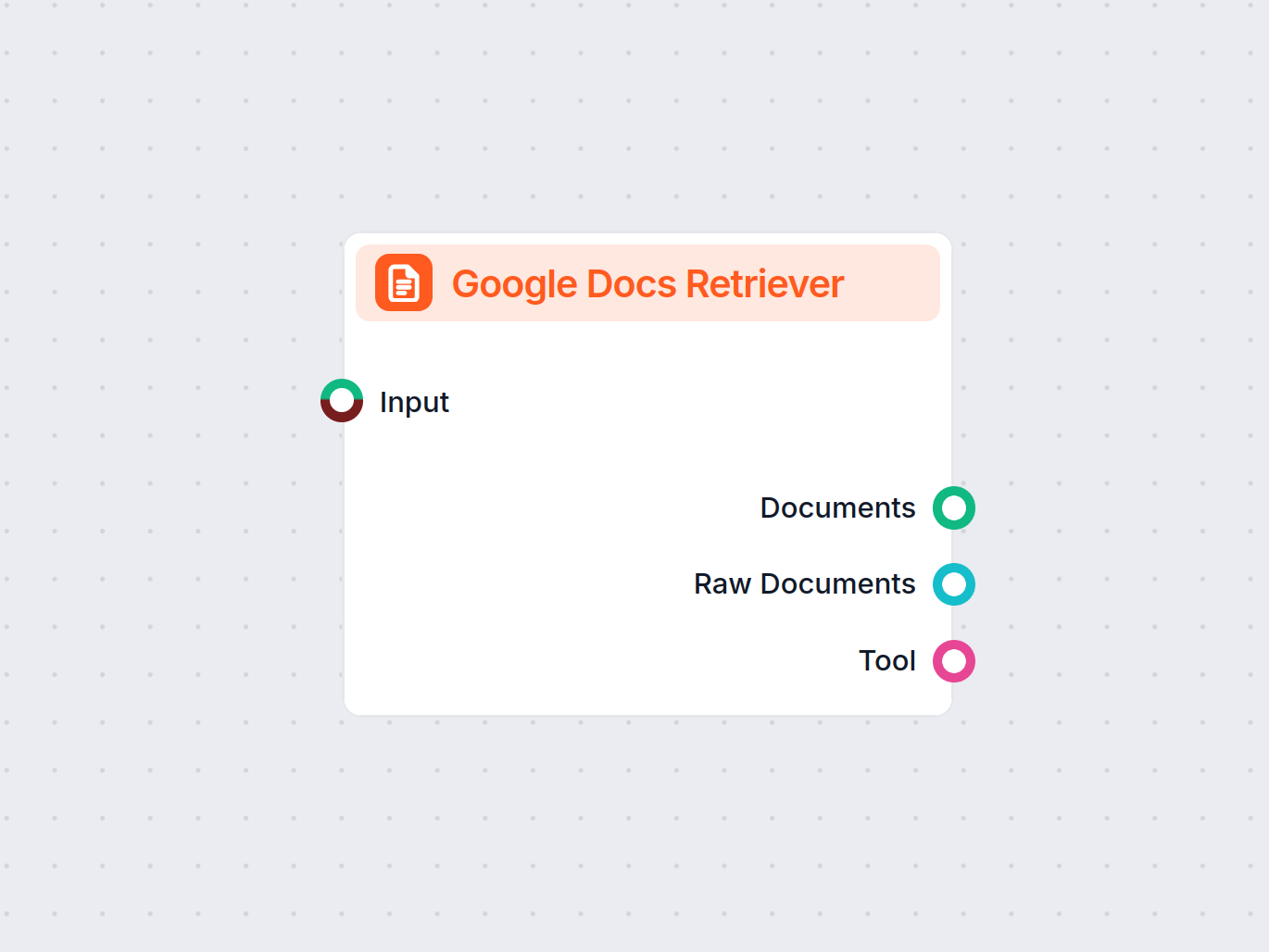
Wyszukiwanie w dokumencie CSV
Łatwo wyszukuj i wydobywaj informacje z plików CSV w swoich workflowach. Komponent Wyszukiwanie w dokumencie CSV pozwala znaleźć konkretne dane poprzez wyszukiw...

Komponent Wyszukiwanie w dokumencie XML umożliwia wyszukiwanie i wyodrębnianie informacji z plików XML przy użyciu tekstu lub wyrażeń zapytań, z obsługą buforowania i niestandardowych limitów wyników.
Opis komponentu
The XML Document Search component is a versatile tool designed to facilitate searching within XML documents. It supports both simple text searches and advanced queries similar to those used in pandas, making it well-suited for extracting specific information from structured data resources in AI workflows.
This component enables users to perform searches within XML files, either by uploading an internal document or providing a URL to an XML file. It can be used to locate specific elements or values, filter content based on various criteria, and extract relevant data for further processing in your AI pipeline.
There is no input handle for this component.
Below is a summary of the input parameters available for configuration:
| Input Name | Description | Required | Default Value | Advanced |
|---|---|---|---|---|
| XML Document ID | Select an internal XML document by its ID. | No | (empty) | Yes |
| XML File URL | Provide a URL to an external XML file if not using an internal document. | No | (empty) | Yes |
| Element Paths | Comma-separated list of XML element paths to restrict search (e.g., product,category). | No | (empty) | Yes |
| Case Sensitive | Whether the search should be case sensitive. | No | False | Yes |
| Max Results | Maximum number of results to return. | Yes | 50 | No |
| Cache TTL | Duration to cache the XML content (e.g., No cache, 5 minutes, 2 weeks, etc.). | No | 2 weeks | Yes |
| Verbose | Enable verbose output for debugging or detailed logs. | No | False | Yes |
| Tool Name | Custom name for the tool, useful for referencing in agent-based workflows. | No | (empty) | Yes |
| Tool Description | Description to help agents understand the purpose and usage of this tool. | No | (empty) | Yes |
Note: Either XML Document ID or XML File URL should be provided to specify the source XML file.
This component is especially useful when your AI process requires working with information stored in XML format, such as product catalogs, configuration files, or structured reports. Its configurability makes it adaptable to simple lookups as well as complex queries, fitting a wide range of data extraction and transformation scenarios.
By incorporating the XML Document Search component, you streamline the process of interacting with and extracting value from XML data sources within your AI workflows.
Umożliwia wyszukiwanie, filtrowanie i wyodrębnianie danych z plików XML w ramach zautomatyzowanych procesów, zarówno przy użyciu prostego wyszukiwania tekstowego, jak i zaawansowanych wyrażeń zapytań.
Tak, możesz wybrać pliki XML przechowywane wewnętrznie lub załadować je z zewnętrznego adresu URL, co zapewnia elastyczność w pozyskiwaniu danych.
Tak, możesz ustawić maksymalną liczbę zwracanych wyników, co zapewnia wydajną i precyzyjną ekstrakcję danych.
Tak, możesz zdefiniować, jak długo wyniki wyszukiwania mają być buforowane, co poprawia wydajność przy powtarzających się zapytaniach.
Tak, możesz włączyć lub wyłączyć uwzględnianie wielkości liter w wyszukiwaniu, aby dostosować się do swoich potrzeb.
Usprawnij swoje workflow dzięki zaawansowanemu wyszukiwaniu i ekstrakcji XML — zacznij korzystać z Wyszukiwania w dokumencie XML w FlowHunt już dziś.
Łatwo wyszukuj i wydobywaj informacje z plików CSV w swoich workflowach. Komponent Wyszukiwanie w dokumencie CSV pozwala znaleźć konkretne dane poprzez wyszukiw...
Komponent Wyszukiwanie w Dokumencie JSON umożliwia zaawansowane przeszukiwanie plików JSON za pomocą wyszukiwania tekstowego lub zaawansowanych wyrażeń zapytań....
Integruj swoje workflowy z Google Docs za pomocą komponentu Google Docs Retriever—pobieraj treść dokumentów bezpośrednio do automatyzacji, chatbotów lub przepły...

